How Christian Europe created anti-Semitism in the Middle Ages
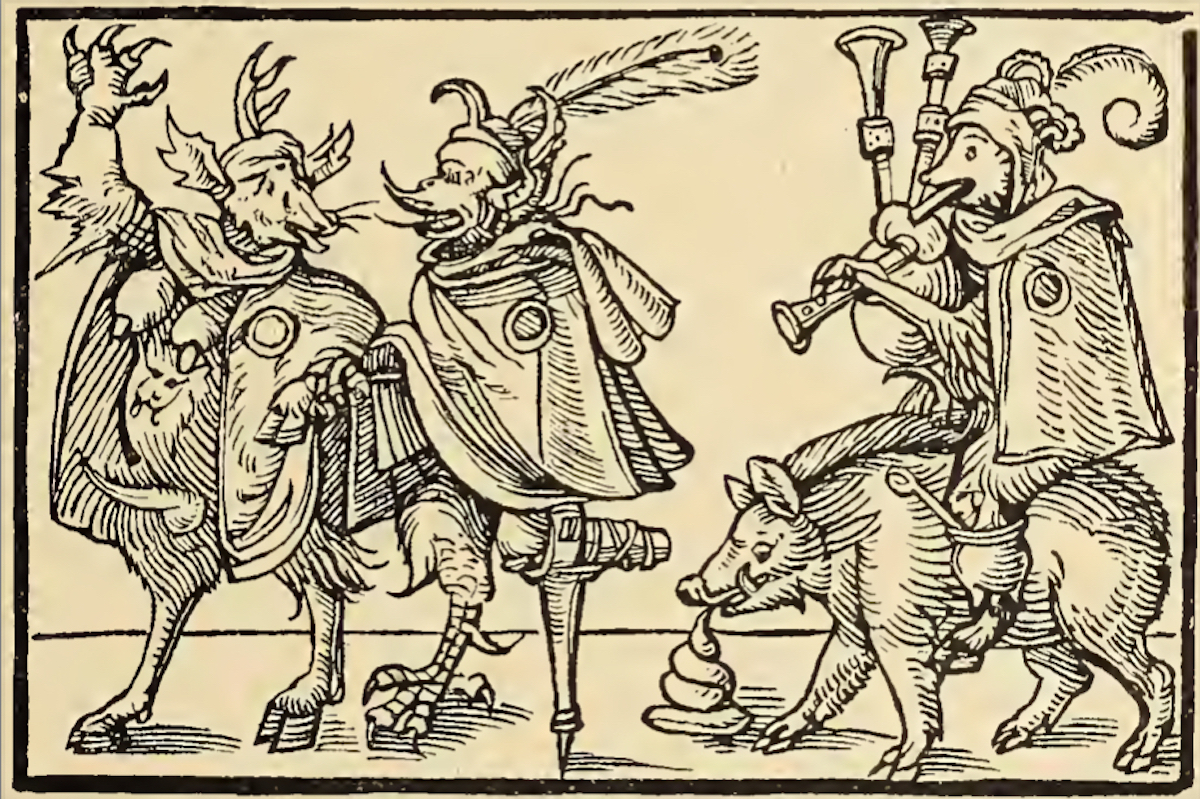
The Covid pandemic has once again shown that nearly all conspiracy theories blame the Jews for the evils of the world. The lies that prevail today emerged in Europe in the Middle Ages.
Today, the blueprint of all conspiracy theories is coursing as rampantly as ever through online chat rooms across the globe: Jews are behind the problems of the world, so the theory goes. More radical varieties of this hatred depict the Jews as animal-like monsters – as seen at the recent Documenta exhibition of contemporary art in Kassel, Germany. During the coronavirus pandemic accusations that the Jews were to blame spread like wildfire online.
When talking about Jews, it remains all too easy to fall back on malicious clichés. The tales that fuelled hatred of the Jews over the past thousand years originated in Europe in the High Middle Ages, where they led to their persecution and destruction, including in Switzerland.
In Switzerland, anti-Semitic prejudices repeatedly rise to the surface. An example is the discussions 25 years ago about the dormant assets of Jewish Holocaust victims, Nazi gold in Swiss banks and Swiss refugee policy during the Second World War, which was characterised by a fear of “Judaisation”.
While the government of the day reluctantly agreed to pay compensation for the lost assets, almost half of the Swiss population wanted to reject all claims, according to a poll by the public broadcaster, SRF. Anti-Semitic stereotypes were regularly used as arguments in letters to newspapers. The Federal Commission on Racism noted a total lack of inhibition when it came to making anti-Semitic statements.
Where did these ideas come from? In a four-part series, SWI swissinfo.ch explores the role anti-Semitism played in Switzerland before, during and after the Second World War.
The other articles in the series:
– The Jews in Switzerland
– Attacks on Jewish department stores 1900-1930
– Left-wing anti-Semitism
Exclusion of the Jews
Christianity, as a Jewish sect, had a fundamental need to delimit itself from Judaism from the outset, and tensions between the two groups were inevitable. Soon after Christianity established itself in Europe, Jews living there were segregated and demonised – they were blamed for the death of Jesus Christ. It nonetheless took more than a thousand years before acts of violent hatred against them became part of everyday life for Jewish communities across Europe.
The mood changed markedly in around the year 1100, at the time of the First Crusade. Hordes of religious fanatics from all social classes, driven by a longing for redemption, set forth to kill infidels in the Middle East and to liberate holy Jerusalem. It stood to reason that they should also combat perceived enemies of Christ at home. Jews were hounded and forced to choose between baptism or death.
The persecution at the time of the Crusades made Jewish communities more vulnerable. Many professions were already barred to Jews – they could not join the guilds, for instance. Through the imposition of horrendous levies, the medieval authorities thus managed to push the Jews into moneylending, an activity that was forbidden to Christians. In some cases they were even forced into it. At the end of the 11th century the Pope explicitly allowed Jews to charge interest for loans, which was considered sinful for Christians. This was a dangerous privilege, as the course of history revealed.
In the 13th century the exclusion of the Jews became Church dogma. In 1213 Pope Innocent III, an ambitious canon lawyer, convened the Fourth Lateran Council. Some 1,500 delegates from all the provinces travelled to Rome, where they spent months discussing matters of central importance to the Catholic Church. They dwelt on the need to wage the Crusades and how to deal with heretical groups such as the Waldensians.
Many questions touched upon the lives of the Jews, both directly and indirectly. It was, for instance, decreed that Jews should wear distinctive signs in everyday life. While it was not unusual at the time for people’s social order to be reflected in their clothing, the Jews were forced to dress differently, and were thus stigmatised, like other marginalised groups of the time: prostitutes, beggars and lepers.
The clerics also condemned even more vehemently the loaning of money at interest, knowing full well that the Jews had been explicitly authorised to do so just a few decades earlier. The Jews thus became lightning conductors for criticism of the socio-economic situation.
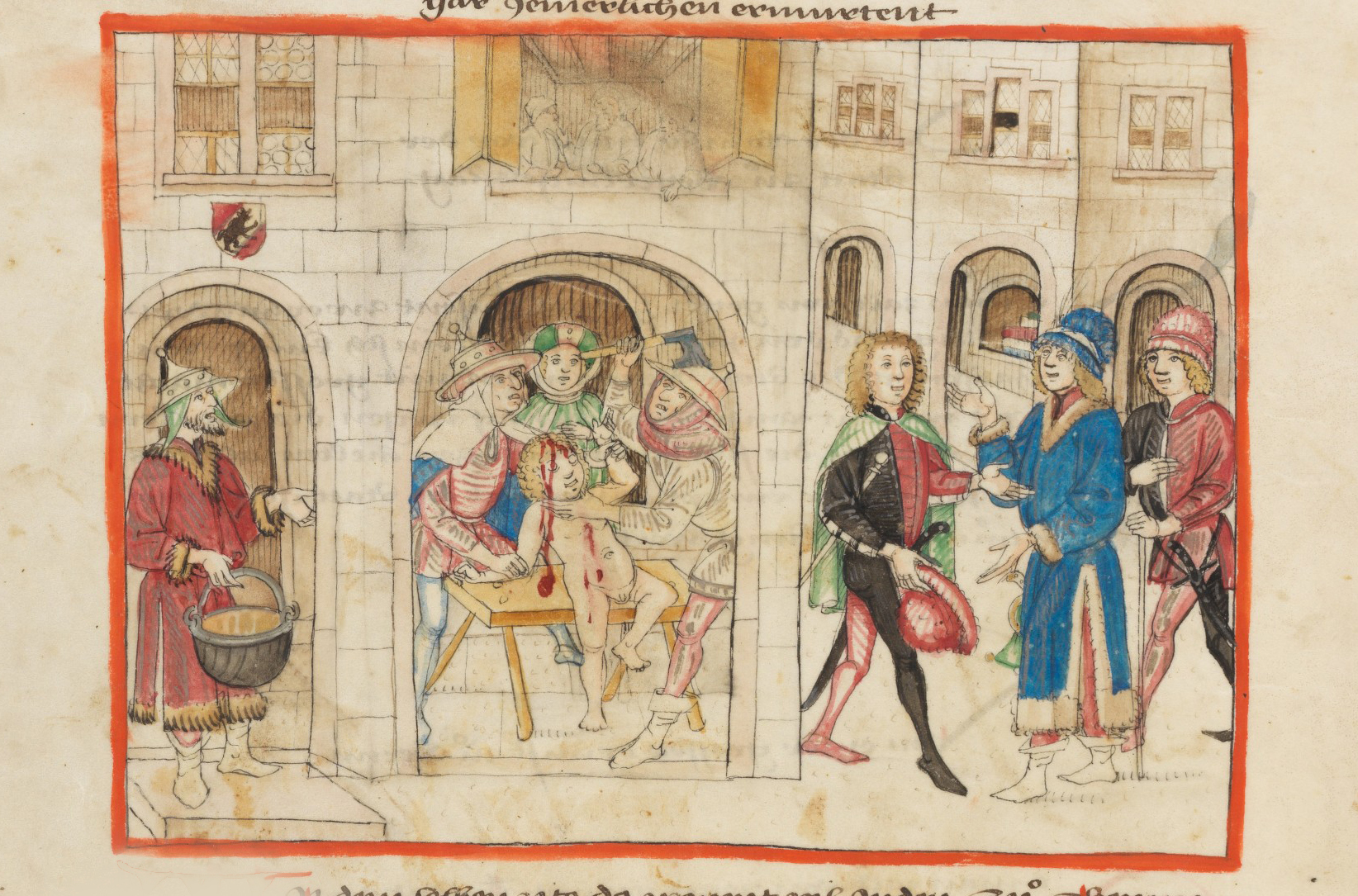
The lie of ritual murder
For many years, however, the economic interests of the Jews’ debtors remained a rather silent driving force, while the suffering inflicted on the Jews was justified on religious grounds. The deliberations at the Fourth Lateran Council on the ritual of Mass had indirect consequences for the Jews: the assembly affirmed that the bread and wine offered in the sacrament of the Eucharist were the actual blood and body of Christ. This doctrine was in keeping with the increasingly central place occupied by the Passion of Christ in religious practice.
The theory that the Jews were conspiring to sacrifice Christian children had started to spread in the 11th century. The legend proliferated first in England and then in France. In 1294 a young boy, Rudolf, was found dead in Bern. A group of Jews was immediately blamed for his death. Although the authorities did not actually believe in the ritual murder theory, all Jews were expelled from the city. Rudolf of Bern was declared a martyr. His bones rested in the altar of the Münster cathedral up until the Reformation, when he was finally reburied in a grave – with the inscription that he had been killed by the Jews. It was not until the 19th century that his status as a saint was called into question by the Bishop of Basel.
The expulsion of the Jews in 1294 continues to haunt the city of Bern, as seen in the debate over whether the iconic Kindlifresserbrunnen, a fountain with a sculpture of an ogre devouring a child, portrays Rudolf’s murder. The main argument for this is the conspicuous yellow pointed hat on the ogre’s head, which resembles the one Jews had to wear from the 13th century onwards.
Initially, the children’s suffering was likened to the Passion of Christ. It was frequently claimed that they had been nailed to the cross and that the Jews had repeated their sin with a Christian child. However, as the legend spread across Europe, this alleged Jewish murderousness was increasingly ascribed to a lust for blood. It was said that the Jews needed blood to make matzo – the unleavened bread eaten at Passover – or for secret rituals. Christianity’s own blood cult was mirrored in its hatred of the outcasts.
The lie of the poisoned wells
Meanwhile, the way Jews were portrayed in European art was also changing, says art historian Sara Lipton. They were shown to be segregated from Christians. In representations of the Passion of Christ they wore the insignia newly imposed on them: yellow hats and yellow rings. Yellow stood for avarice, envy and arrogance. Their faces were now also drawn differently. Jews began to be depicted with the crooked noses that were considered typical of them right through to Nazi racial theory – thereby equating them with Satan, who had long been represented with a hooked nose.
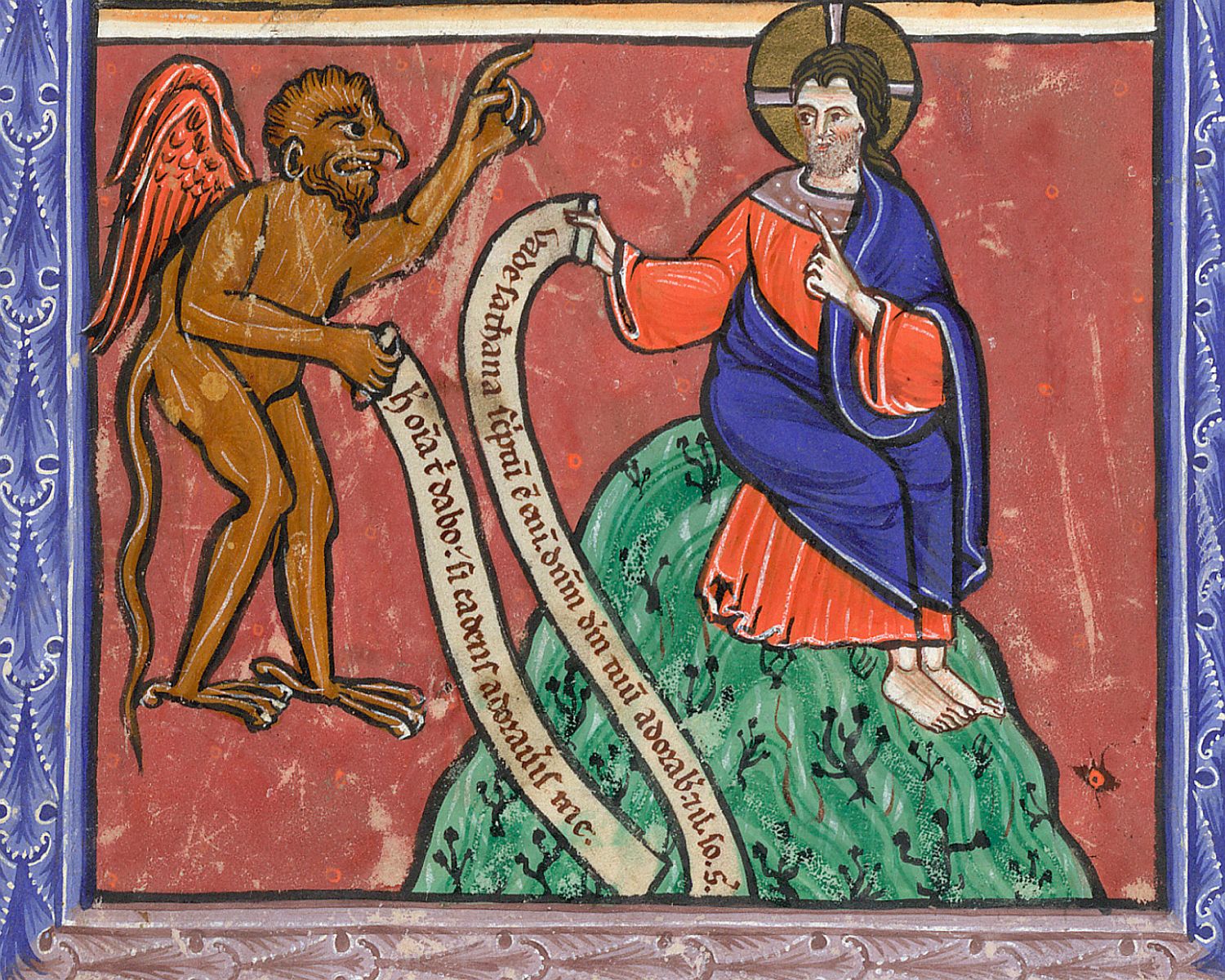
At the same time, hatred of the Jews was increasingly becoming dissociated from theological explanations. As the plague ravaged Europe at the end of the 14th century, another powerful lie about the Jews began to circulate. They were accused of poisoning water sources, and thus bringing the Black Death to the population.
The ensuing persecution of the Jews across Europe was no outbreak of mass panic – the wave of destruction was triggered by false news spread about the Jews.
Thus, in 1348, a Jewish doctor confessed under torture that Jewish conspirators had brewed a poison and sent it to the Jewish diaspora with instructions to poison local wells. The authorities sent transcripts of what became known as the Lausanne confession to Fribourg, Bern and Strasbourg – from where it spread throughout the German Empire. Cities compared their experiences of expulsion and extermination of the Jews – and wherever the news reached, house searches, torture and the destruction of all local Jews ensued. In 1348, the Swiss cities of Bern, Burgdorf, Solothurn, Schaffhausen, Zurich, St Gallen and Rheinfelden killed or expelled their Jewish populations.

Communities that dragged their feet, such as Aarau and Winterthur, were advised by other cities in 1349 to also execute their Jews – which they then did. In Basel, in 1348, the city council had expelled a group of violent criminals who had devastated the Jewish cemetery. But in 1349, the same council ordered that all Jews be removed from the city and burnt hundreds of them in a specially built wooden house on an island in the Rhine.
The lie of the rich Jew
Around 1400 the first contemporary voices began to draw an explicit link between the persecution of the Jews and the economic role into which they had been forced since the turn of the millennium. The Strasbourg chronicler Fritsche Closener held that, by expelling the Jews, people could free themselves of their debts to them. The privilege granted to them centuries earlier was to be their final undoing.
Even after the plague pogroms, Jews began to resettle tentatively in cities across Europe. But the Church’s laws of segregation were now being enforced with renewed vigour. In Zurich, prostitutes who served Jews were banished, and women who were intimate with Jews were publicly humiliated by being made to wear pointed Jewish hats. Christians were punished if they danced or celebrated with Jews. In Basel, Jews were no longer allowed to touch food at the market. In Geneva from the end of the 15th century, Jews were assigned to a ghetto that they had to share with prostitutes.

As a result of the expulsions and the arbitrary repayment of debts, by the 14th century many Jewish moneylenders were short of funds. The rules had been relaxed and Christian competitors were increasingly entering the business. The Jews were thus pushed into pawnbroking, which was considered especially reprehensible, as people lost their land and homes as a result.
Impoverished nobles, in particular, often blamed their economic decline on the high interest rates charged by Jews – even though these were often their last and only resort for procuring funds. Thus the Jews became the scapegoats of economic structural change during the transition from feudalism to an economy dominated by urban trade.
Ironically, it was with the very decline in the Jews’ economic importance that the accusation of Jewish usury became the prime motive for their persecution – precisely because they were no longer needed.
Cities across Europe began to expel the Jews for good. Here and there, a Jewish doctor or individual families were allowed to stay on. At the end of the 15th century all Jews were also expelled from the cities of Switzerland. They settled in rural areas or fled eastwards.
But hatred of the Jews did not disappear simply because there were no more Jews around. The yearly Passion plays featured devilish Jews, and the tale of the money-obsessed, bloodthirsty Jew continued to thrive.

Nor did anti-Semitism end with Catholicism. Historians see German theologian and Protestant reformer Martin Luther (1483-1546) and his inflammatory speeches against the Jews as a central interface between the hatred of the Jews in the Middle Ages and its expression in the modern age.
Jews were declared in absentia as fundamentally evil, economically harmful and damned by God. Hatred of the Jews passed into folklore, and the paranoid tales of Jewish treachery took on a life of their own, resurfacing whenever needed to provide a scapegoat in times of social instability and turmoil.
Modern anti-Semitism took up where this left off. In the radical upheaval of 19th-century industrialisation, the Jews once again became lightning conductors for criticism of social change. Hatred of the Jews was dressed in biological terms. Racial theory emerged and began its devastating triumphal march across Europe and the world.

In compliance with the JTI standards
More: SWI swissinfo.ch certified by the Journalism Trust Initiative

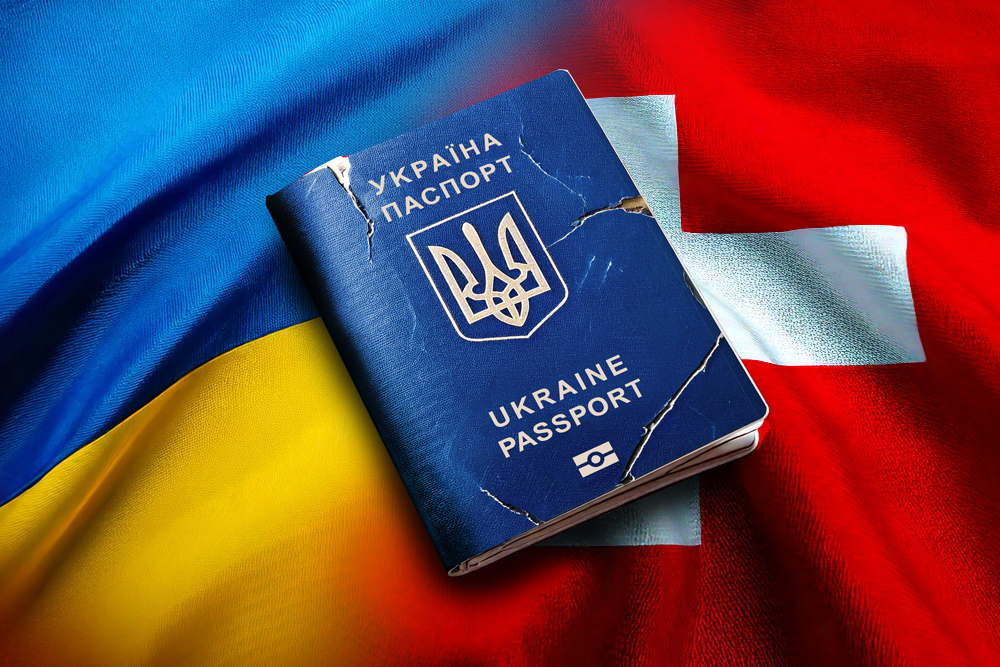








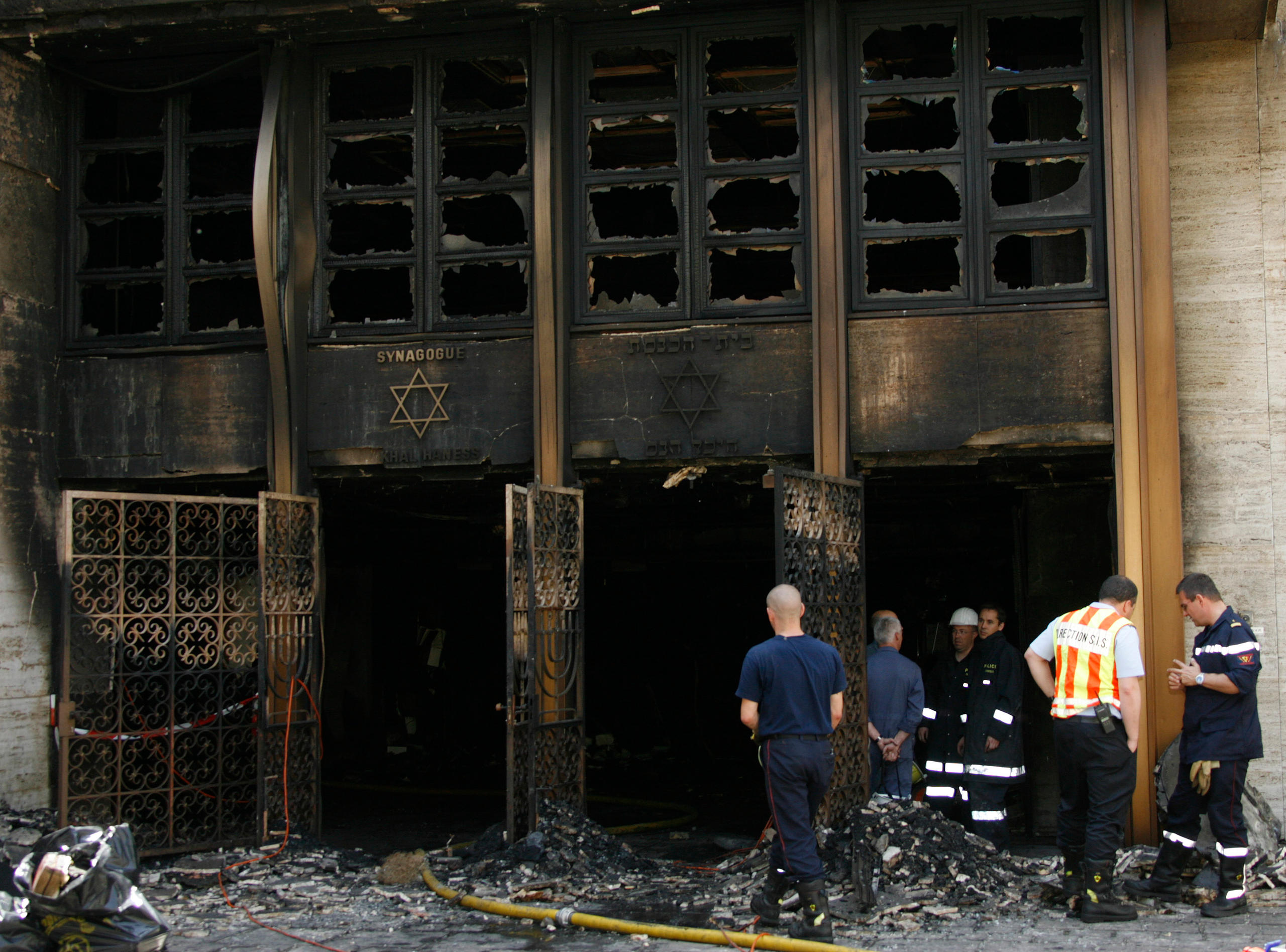


You can find an overview of ongoing debates with our journalists here . Please join us!
If you want to start a conversation about a topic raised in this article or want to report factual errors, email us at english@swissinfo.ch.